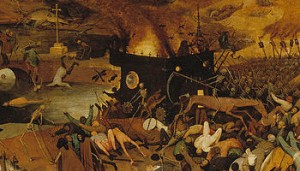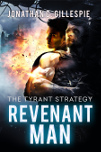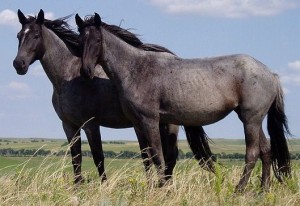Weapons That Changed the Course of History (And My Fiction), Part 2
February 28, 2013 in General Topics
We’ve come to the second and final part of this miniseries on weapons that changed the course of history. In my first post, I covered two real-world weapons, and then one near-world weapon that appeared in The Tyrant Strategy: Revenant Man (and will, of course, show up in the later books in the series).
Today we’ll tackle three more, including the deadliest, most human event-affecting weapon of all time.
Historical Weapon: The Horse
Am I going too primitive? I think not. When thinking of mobile warfare, it was the horse that kicked everything off.
Four hooves, plus some training, plus some gear, plus about twenty five-thousand calories a day, got a warrior an animal capable of making them taller, faster, stronger, and more mobile. Environments like the Mongolian Steppe–these “oceans without water” gave us the greatest cavalry forces of all time. And without the horse, they would have been a pale shadow of what they actually achieved.
Horse-riding is so ancient that there’s conjecture about who exactly started doing it first. Later improvements to the saddle enhanced one’s capabilities on the backs of these animals. Chief among these were stirrups, which enabled fighters to stay mounted, even when wielding weapons such as the lance.
Then there were the horse’s more utilitarian purposes. The animals enabled artillery transport before there were internal combustion engines, and even in some forces considered mechanized–such as the Wehrmacht, horses were still in greater use than their technological counterparts.
Finally, and sadly, a soldier in dire circumstances could always eat this trusty companion.
So great was the horse’s value–and the tactics that its presence created–that some commanders like George S. Patton attempted to replicate cavalry tactics with more modern tech. They wanted the lightning raids and aggressive thrusts that these animals enabled, but on the modern battlefield. Hence, the horse directly contributed to twentieth and twenty-first century warfare.
Fictional Weapon: The Boarding Torch
Beacon‘s universe (it’s a serial now, folks!) is defined by multiple layers of ships in orbit around the eponymous star that serves as the central location in the saga. With so many ships–tens of millions–together, spread across an untold number of species, hostilities are going to be inevitable. But beyond that, the more utilitarian purposes of search-and-rescue, police actions, and even the removal of derelict vessels out of merchant flight paths make the boarding torch a necessary tool and weapon.
The device is designed to operate with its own battery pack, or integrated into an EV suit, piggybacking off the energy supply. It can generate a powerful cutting element on demand, capable of carving up ship hulls and allowing the user access to the interior of a vessel.
But the boarding torch is more sophisticated than a simple cutting device. It can also detect the composition of the target hull and adjust its beam in a variety of ways, such as or temperature, method (such as laser or chemical). In addition, the boarding torch can even warn the user if its use might cause an undesired event–such rupturing a fuel tank and causing an explosion.
In the vacuum of Beacon’s orbit, there are few more indispensable tools.
Historical Weapon: Disease

A snippet of “Triumph of Death”, by Pieter Bruegel the Elder, depicted a plague. (Obviously, someone had a very bad day).
Take humanity’s arsenals and flush them down the toilet. Turn every Alexander the Great into a pacificst, every Genghis Khan into a poet, and every Tamerlane into a farmer–and humankind would have still killed hundreds of millions of its own simply in the course of migration and discovery.
No weapon ever unleashed across the surface of this planet, or above it, has equaled the raw power and civilization-crippling might of disease. Sometimes man has inflicted disease upon his fellow man accidentally, such as when Conquistadors brought smallpox to South America. At other times, he’s tried deliberate methods to foster the spread of plague, such as hurling animal carcasses over castle ramparts.
It says a lot about the destructive potential of disease that Adolf Hitler had a standing order that biological warfare was only to be researched for defensive purposes only, that even as Russian tanks rolled into Berlin, a dictator willing to send small children into combat was unwilling to authorize his so-called “weapons of despair”, which were allegedly ready for deployment.
Perhaps the most devastating aspect of biological warfare, though, is that by its very nature it is not self-limiting. I mentioned nuclear weapons earlier, and I’m compelled to bring them up again because they share the same problem: one can’t guarantee that the effects of such weapons will stop once they start.
But the problem is magnified when dealing with pathogens, which can mutate into even deadlier strains. These are, in many ways, the ultimate weapons. But they have a nasty tendency to backfire and kill their own users.
Or, perhaps, that is simply poetic justice.
Thanks for reading through this series. I hope you’ve enjoyed it. Look for a second installment of Beacon within just two weeks, and by all means–stay tuned.



Recent Discussion